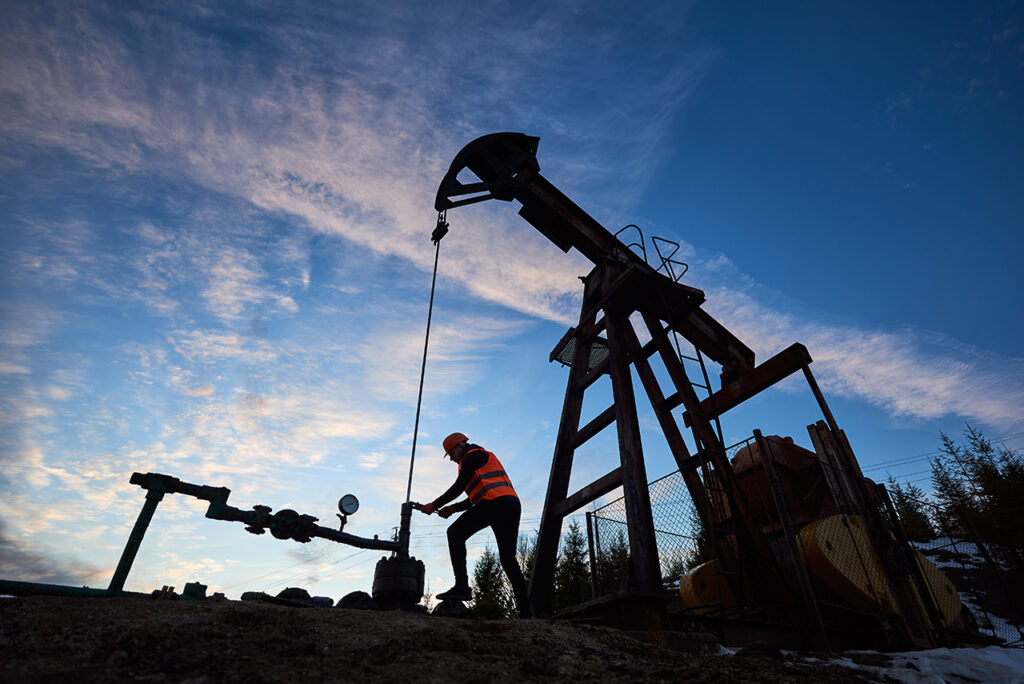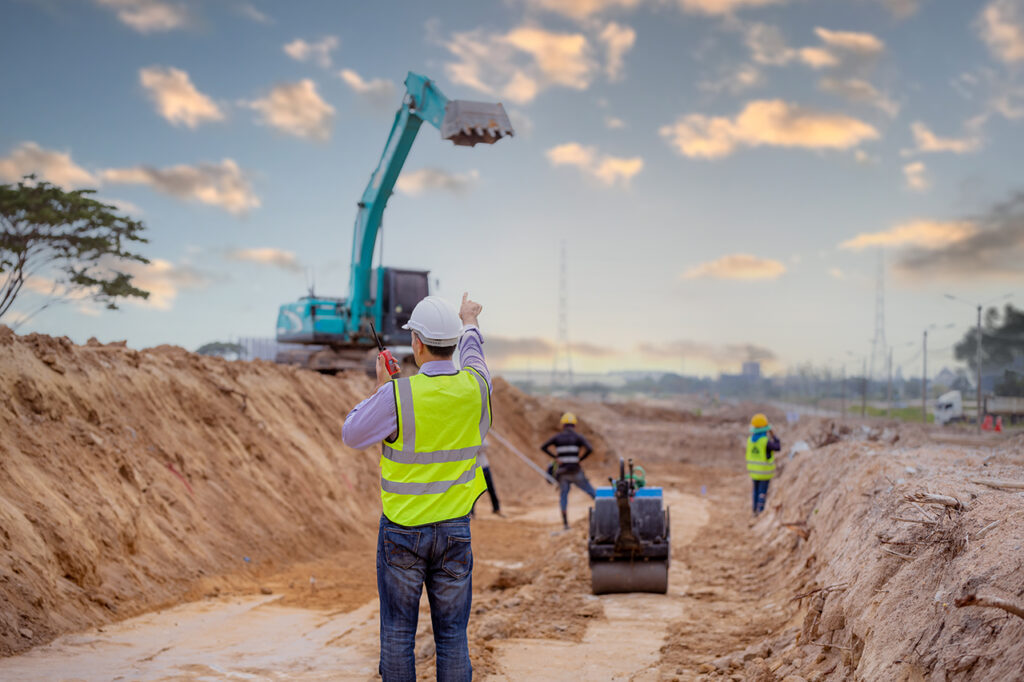In workplace safety, one metric tells the story louder than the rest: Total Recordable Incident Rate (TRIR). It’s your operational pulse. Your TRIR reflects how often people get hurt, how well your safety systems are working, and how much risk your business is carrying at any given moment.
And here’s the truth: everyone is watching it.
From OSHA inspectors to insurance underwriters, from general contractors to internal leadership—your TRIR shows up in prequal forms, audits, risk reports, and investor decks. A high TRIR can flag you as a liability. A low one earns trust, contracts, and peace of mind.
That’s why smart companies track TRIR obsessively—not just to stay OSHA-compliant, but to prevent incidents, reduce legal exposure, improve efficiency, and protect their reputation.
In this guide, we’ll break it all down:
- What TRIR actually is and why it matters
- How to calculate it step-by-step
- The hidden risks of a high TRIR
- And how to dramatically lower your rate using proven strategies and smart tools like Field1st
Let’s get into it. Your safety culture—and your next contract—could depend on it.
What is a TRIR?
Total Recordable Incident Rate (TRIR) is a standardized metric used to measure a company’s workplace safety performance. It reflects the number of OSHA-recordable incidents (injuries or illnesses) per 200,000 hours worked, which equates to the total hours worked annually by 100 full-time employees.
TRIR serves as a universal benchmark across industries. It allows organizations to track safety trends over time, compare performance against competitors, and demonstrate compliance with both internal safety goals and external regulations.
It’s not just an internal KPI—it’s a public scorecard that shows up in:
- Prequalification forms for major construction projects
- Insurance risk assessments and EMR evaluations
- OSHA inspections and enforcement audits
- Investor and stakeholder ESG reports
- Corporate safety performance dashboards
High TRIR? You’re seen as a liability.
Low TRIR? You’re seen as safe, disciplined, and partnership-ready.
Why TRIR Matters
Most businesses track TRIR to stay in OSHA’s good graces. But the real-world impact is much bigger—and much more costly—than a fine. Your TRIR doesn’t just live in a report; it lives in your field operations, your financials, and your reputation.
1. OSHA Compliance
TRIR is one of OSHA’s go-to metrics. A high rate can raise red flags and trigger inspections, penalties, or inclusion on OSHA’s Severe Violator Enforcement Program (SVEP) list.
2. Legal & Financial Risk
Recordable incidents often lead to workers’ compensation claims, lawsuits, and increased insurance premiums. A single preventable injury could cost thousands—or more if negligence is proven. For large operations, that cost multiplies quickly.
3. Operational Disruption
Every injury disrupts the workflow. It pulls people off the job, increases absenteeism, delays timelines, and reroutes leadership attention from productivity to incident management. Over time, it eats into margins and morale.
4. Company Reputation
TRIR is one of the first numbers prequalifiers check when awarding major contracts. A high rate may flag your company as too risky, locking you out of opportunities, especially with large general contractors or public sector clients.
Bottom line? Your TRIR is a direct reflection of how well you protect your people—and how well your business runs. Keep it low, and everything runs smoother. Let it spike, and everything gets harder.
How to Calculate TRIR (Step-by-Step)
Understanding how to calculate TRIR is critical to measuring and improving your workplace safety performance. Follow these steps:
Step 1: Determine the Number of OSHA Recordable Incidents
Count all OSHA-defined recordable incidents during your reporting period. These include any injury or illness that results in:
- Medical treatment beyond first aid
- Loss of consciousness
- Restricted work activity
- Days away from work
- Significant diagnosed injury or illness
Be accurate, misreporting can inflate your TRIR or expose you to compliance violations. Use your incident logs, Form 300, and internal reports to verify.
Step 2: Calculate Total Hours Worked
Total hours worked = sum of all actual work hours by employees (excluding vacation, sick time, or unpaid leave). Be sure to include full-time, part-time, and temporary workers—especially on high-risk sites. Accurate hours are critical to producing a reliable TRIR.
Step 3: Apply the TRIR Formula
TRIR = (Number of Recordable Incidents x 200,000) ÷ Total Hours Worked
Why 200,000? That figure represents the annual hours 100 full-time workers clock in a year (40 hours/week x 50 weeks x 100 employees). It standardizes your rate so you can compare across industries and company sizes.
Example:
Let’s say you had 3 OSHA-recordable incidents and logged 150,000 work hours:
TRIR = (3 x 200,000) ÷ 150,000 = 4.0
That number is higher than most industry benchmarks and signals a need for immediate corrective action.
Step 4: Interpret the TRIR Score
- TRIR < 1.0 – Exceptional safety record
- TRIR 1.0–3.0 – Industry average range
- TRIR > 3.0 – Indicates major safety system gaps
Interpretation depends on your sector, jobsite risk level, and workforce size. High TRIR in construction or oil and gas is still problematic—because even “average” can mean preventable injuries.
With Field1st, you don’t need to manually track hours or incidents. The system automatically logs employee work hours, records every incident in real time, and instantly calculates your updated TRIR on a live dashboard. No spreadsheets. No waiting. Just accurate, audit-ready data when you need it most.
Factors That Affect Your TRIR
1. Industry Type
High-risk industries like construction, oil and gas, or manufacturing will naturally have higher TRIRs. But that doesn’t mean high is acceptable—it means prevention is critical.
2. Workplace Safety Culture
If workers are poorly trained, disengaged, or feel unsafe reporting incidents, your TRIR will suffer—even if you have a polished safety manual.
3. Incident Reporting Accuracy
Some companies underreport to look good. Others overreport due to poor classification. Either way, inaccurate data skews your TRIR and can trigger compliance issues.
4. Use of Safety Technology
Companies using real-time tracking tools like Field1st generally maintain lower TRIRs, because they identify and resolve hazards faster.
5. Policy Compliance & Accountability
Are your safety policies followed daily, or just during audits? Inconsistent enforcement often leads to increased incidents and inflated TRIR scores.
What is a Good TRIR?
There’s no one-size-fits-all number, but OSHA and the Bureau of Labor Statistics (BLS) publish average TRIR rates by industry. Understanding where your company stands helps guide safety strategy and investment.
General TRIR Benchmarks:
- Below 1.0 – World-class safety performance
- 1.0–3.0 – Common for high-risk industries
- Above 3.0 – Signals poor safety systems and high exposure
A lower TRIR reflects not just fewer incidents—it signals stronger leadership, disciplined execution, and a culture that prioritizes safety. High performers in construction, energy, and infrastructure often use safety as a competitive edge in bids and partnerships.
Want to lower your rate and rise above your competition?
Start with better data.
Field1st automatically tracks TRIR in real time and provides predictive alerts so you can act before incidents occur—not after.
How to Improve Your TRIR Rate
Let’s talk strategy. Here are five battle-tested ways to reduce your TRIR—and keep it low.
1. Strengthen Workplace Safety Programs
Conduct regular hazard identification walkthroughs and actively log potential risks. Involve employees in safety committees, daily observations, and solution-building, engaged teams are safer teams. Improve housekeeping, eliminate clutter, and enforce clean, organized work zones. Ensure PPE is used correctly and consistently, with zero tolerance for non-compliance.
Safety programs only work if they’re lived—not just laminated. When workers feel ownership over safety and leadership enforces standards consistently, TRIR begins to fall. Proactive, people-centered safety isn’t just policy—it’s performance protection.
2. Enhance Safety Training & Awareness
Run OSHA-compliant onboarding and regular refresher training across all job roles. Use visual, multilingual, and mobile-friendly materials to ensure accessibility. Schedule interactive toolbox talks, workshops, and real-world drills to reinforce learning. Deploy micro-training videos that crews can access in the field—on demand, in the moment.
Pro Tip: Field1st delivers AI-driven training reminders and mobile learning modules tailored to specific job roles, risk levels, and project phases. This ensures employees not only receive the training but retain it. When safety knowledge is easily accessible and reinforced regularly, compliance improves—and TRIR drops.
3. Improve Incident Reporting & Root Cause Analysis
Create simple, anonymous ways for employees to report near-misses or unsafe conditions, without fear of blame. Establish a formal process for root cause analysis (RCA) to uncover not just what happened, but why. Track corrective actions to closure, not just the first response.
Field1st makes this easy with real-time, mobile-friendly reporting tools that even work offline. Every report is automatically logged, categorized, and timestamped—building a digital trail for compliance and deeper safety insight. The platform also connects RCA findings directly to future risk predictions, turning every incident into actionable intelligence that helps lower TRIR over time.
4. Leverage Technology for Real-Time Monitoring
Why wait for weekly safety meetings when the problem is happening now?
Install IoT sensors to monitor equipment, environmental hazards, and worker proximity in high-risk zones. Use mobile platforms to flag hazards instantly and track near-misses before they escalate. Monitor leading indicators like unsafe behaviors and PPE non-compliance.
Field1st brings it all together—capturing real-time field data, identifying trends, and applying predictive analytics to forecast risks before they become incidents. Its live dashboards give safety leaders and supervisors instant visibility across all job sites, helping teams take action faster, tighten controls, and drive down TRIR through smarter, tech-enabled decisions.
5. Optimize Safety Policies & Accountability
Review and update your safety policies at least quarterly to stay aligned with industry standards and evolving jobsite risks. Assign clear responsibilities—from frontline workers to senior leadership. Hold supervisors and managers accountable for safety performance using measurable KPIs.
Audit your own audit process regularly to ensure it’s still effective.
Consistency is everything. If rules are vague, outdated, or unevenly enforced, compliance drops and TRIR climbs. Platforms like Field1st help standardize policies across teams, provide version control, and track accountability—so safety expectations are always clear, always enforced, and always improving.
Reduce TRIR Rate with Field1st
Reducing your TRIR is a long-term, high-stakes mission—but you don’t have to do it manually. Field1st empowers safety leaders to take control of incident management, compliance tracking, and proactive risk mitigation—all from a single platform.
Here’s how Field1st helps:
- Automated TRIR Calculation
No more spreadsheet headaches—Field1st calculates TRIR in real time using accurate, logged incident data and work hours. - Real-Time Incident Tracking
Crews can report incidents, near-misses, and hazards on any device—online or offline—ensuring every event is captured the moment it happens. - Audit-Ready Reporting
Every action is timestamped, categorized, and ready to export—making OSHA audits and insurance reviews faster, cleaner, and less stressful. - Predictive Safety Insights
Field1st flags trends and high-risk patterns early, helping you prevent injuries before they occur. - Embedded Training & Compliance Tools
Push site-specific training reminders, safety briefings, and policy updates directly to mobile devices, closing the gap between procedure and practice.
Your TRIR isn’t just a number, it’s a reflection of how you run your jobsite. Keep it low, and you protect lives, contracts, and your bottom line.
Final Thoughts
Your TRIR is more than a number—it’s a pulse check on the health of your safety culture and operational discipline. A high TRIR signals systemic issues, potential liabilities, and, most importantly, workers at risk. A low TRIR tells a different story—one of leadership, consistency, and a commitment to getting safety right.
Field1st helps you get there, faster and smarter.
- Automate TRIR tracking
- Streamline safety audits
- Boost team accountability
- Catch problems before they turn into injuries
- Turn every near-miss into a learning opportunity
Don’t just monitor safety—master it. Let Field1st help you lead the industry in protection and performance.
Ready to Take Control of Your TRIR?
If you’re still tracking safety incidents manually, you’re behind. The future of workplace safety is real-time, data-driven, and proactive—and Field1st is built to lead that charge.
Your team deserves a safer way to work—and your business deserves a TRIR you’re proud to report.





